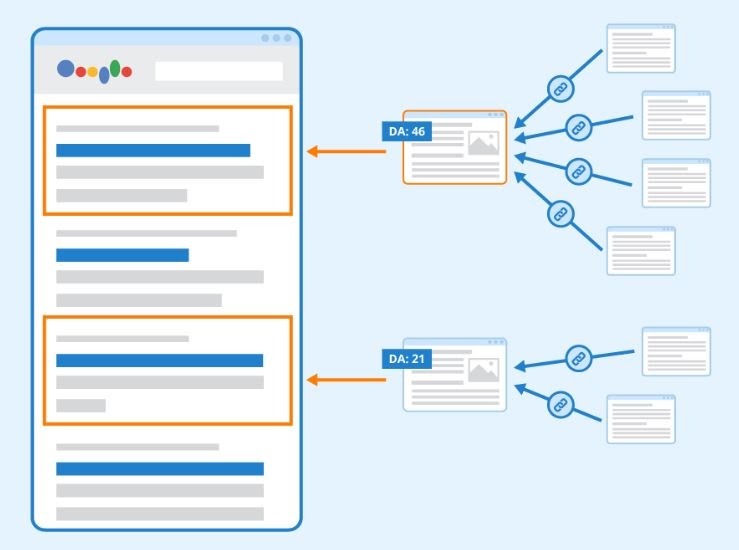1. Understand Your Audience
Before diving into keyword research tools, start by understanding your target audience. Ask yourself:- Who is your ideal reader?
- What are their interests, problems, and needs?
- How would they phrase a query when looking for content like yours?
- Informational: People want to learn something (e.g., “how to bake bread”).
- Navigational: People are looking for a specific site (e.g., “Facebook login”).
- Transactional: People want to buy something (e.g., “best budget laptops”).
- Commercial Investigation: People are researching a product but haven’t decided to buy (e.g., “best DSLR cameras under $500”).
2. Brainstorm a Seed List
The next step is to brainstorm a list of seed keywords. These are broad terms or phrases related to your blog's topic. For instance, if your blog is about fitness, your seed keywords could be “exercise,” “workout routines,” “healthy living,” and “weight loss.” Use these seed keywords as a foundation to explore more specific long-tail keywords later. Long-tail keywords are often longer, more specific phrases that may have lower search volumes but higher conversion rates because they target a more specific audience.3. Use Keyword Research Tools
Once you have a seed list, use keyword research tools to expand it and refine your choices. These tools provide insights such as search volume, keyword difficulty, and competition levels. Here are a few popular options:- Google Keyword Planner: Google’s free tool provides search volume data and keyword suggestions. It’s a great starting point, especially for paid ad campaigns.
- SEMrush: SEMrush not only shows you keyword volume and difficulty but also offers competitor analysis so you can see what keywords others in your niche are ranking for.
- Ahrefs Keywords Explorer: Ahrefs provides a detailed analysis of keyword difficulty, volume, and traffic potential. It also includes a useful “Questions” section to find keywords framed as questions.
- Ubersuggest: Ubersuggest is an easy-to-use tool offering keyword suggestions, search volume data, and SEO difficulty, making it a solid choice for beginners.
- Search Volume: How often people search for the keyword each month.
- Keyword Difficulty: How hard it is to rank for that keyword. Keywords with lower difficulty are easier to target.
- Search Intent: Align the keyword with the intent of your audience. A high-volume keyword won’t be effective if it doesn’t align with what your readers are looking for.
4. Explore Competitor Keywords
Another valuable strategy is to analyze the keywords your competitors are using. If their blog posts are ranking well, it could be a sign that those keywords are effective. Tools like SEMrush, Ahrefs, and Moz allow you to see which keywords are driving traffic to your competitors’ sites. Look at the top-ranking blog posts in your niche and check what keywords they are optimized for. You can then either target the same keywords or find related, less competitive ones to differentiate your content.5. Use Long-Tail Keywords
Long-tail keywords may have less search volume, but they are more targeted and often lead to better engagement and conversions. For instance, instead of targeting “yoga,” which is highly competitive, you could target “yoga routines for beginners with back pain.” Long-tail keywords also help you rank faster because they tend to have less competition. Additionally, they more closely align with specific search intents, which can increase your chances of converting readers into loyal followers.6. Check Search Trends
Search trends fluctuate over time, so it’s crucial to monitor what’s gaining popularity in your niche. Google Trends is an excellent tool for seeing how search interest for a keyword has changed over time. You can even compare multiple keywords to find out which ones are currently gaining traction. Paying attention to seasonal trends is also important. For example, a travel blog might see spikes in interest for keywords like “summer vacation destinations” at certain times of the year.7. Focus on User Experience (UX)
While optimizing for keywords is essential, remember that your blog is ultimately for people, not search engines. Ensure that your content provides real value and answers the queries your audience is searching for. Additionally, Google’s algorithms increasingly prioritize user experience. This means factors like page load speed, mobile-friendliness, and overall site usability can impact your rankings just as much as keywords. Write with clarity, provide valuable information, and make sure your site is easy to navigate.8. Analyze and Adjust Regularly
Keyword research isn’t a one-and-done process. Regularly review your keyword performance using tools like Google Search Console or SEMrush. Track which keywords are driving the most traffic and conversions, and adjust your strategy accordingly. Over time, search trends change, and your competitors may start targeting the same keywords. Keep refining your keyword list and content to stay ahead of the curve.Conclusion
Effective keyword research is the foundation of a successful blog. By understanding your audience, using keyword research tools, focusing on long-tail keywords, and monitoring search trends, you can create content that attracts the right audience and performs well in search engines. Remember, SEO is an ongoing process, so stay flexible and be ready to adjust as you gain more insights into what works best for your blog. Read more :1= https://checkwebsitedr.com/blogs/how-to-search-for-reliable-information-on-the-internet/
2= https://checkwebsitedr.com/blogs/how-to-search-for-secure-and-private-browsing-options/
3= https://checkwebsitedr.com/blogs/how-to-search-for-family-history-and-genealogy-records/
4= https://checkwebsitedr.com/blogs/how-to-search-for-competitors-and-analyze-their-strategies/
5= https://checkwebsitedr.com/blogs/how-to-search-for-job-openings-in-your-field-a-step-by-step-guide/
6= https://checkwebsitedr.com/blogs/how-to-search-for-healthy-recipes-that-fit-your-diet/
7= https://checkwebsitedr.com/blogs/how-to-search-for-and-apply-for-grants/
8= https://checkwebsitedr.com/blogs/how-to-search-for-the-right-keywords-for-your-blog/
9= https://checkwebsitedr.com/blogs/how-to-search-for-local-services-near-you/
10= https://checkwebsitedr.com/blogs/how-to-search-for-the-best-travel-deals-and-discounts/


